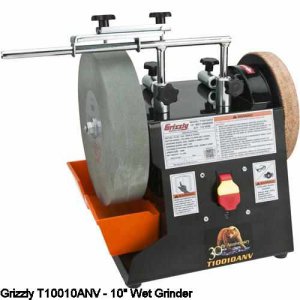-
Welcome back Guest! Did you know you can mentor other members here at H-M? If not, please check out our Relaunch of Hobby Machinist Mentoring Program!
You are using an out of date browser. It may not display this or other websites correctly.
You should upgrade or use an alternative browser.
You should upgrade or use an alternative browser.
screwdriver sharpening.
- Thread starter plunger
- Start date
- Joined
- Feb 2, 2013
- Messages
- 3,642
i struggle too! 
it would be nice to come up with a fixture that would get clamped to the shaft and get you a good tapered grind
something with a v notch so you could do square or round shanks on a regular bench grinder
i use my 4"x 48" belt sander to make my mistakes,
but i'm looking to try out my surface grinder next and see how that works

it would be nice to come up with a fixture that would get clamped to the shaft and get you a good tapered grind
something with a v notch so you could do square or round shanks on a regular bench grinder
i use my 4"x 48" belt sander to make my mistakes,
but i'm looking to try out my surface grinder next and see how that works
- Joined
- Nov 15, 2016
- Messages
- 943
Well wether it is a recognised way or not I don't know and I am going to make an assumption that you are reffering to a stright blade screwdriver. The way I was taught was to square off the tip then face the blade facing upwards on the grinding wheel with the centerline of the wheel below the tip by a guesstimate according to the size of the blade and grind a hollow, turn the blade and do the same on the other side. This effectively makes the blade straight on the potion that enters the slot and prevents cam-out and even on crappy screws with a stamped slot,(that is more of a V), you still get good bite at the root of the slot. If you have a close look at some of those interchangible bits or a Gunsmith set of drivers you will see what I mean. Tapered blades are a P.I.T.A. espescially if used on a worn/damaged screw.
That's my 2 cents worth.
That's my 2 cents worth.
- Joined
- May 16, 2016
- Messages
- 1,702
Well wether it is a recognised way or not I don't know and I am going to make an assumption that you are reffering to a stright blade screwdriver. The way I was taught was to square off the tip then face the blade facing upwards on the grinding wheel with the centerline of the wheel below the tip by a guesstimate according to the size of the blade and grind a hollow, turn the blade and do the same on the other side. This effectively makes the blade straight on the potion that enters the slot and prevents cam-out and even on crappy screws with a stamped slot,(that is more of a V), you still get good bite at the root of the slot. If you have a close look at some of those interchangible bits or a Gunsmith set of drivers you will see what I mean. Tapered blades are a P.I.T.A. espescially if used on a worn/damaged screw.
That's my 2 cents worth.
Absolutely the way to go, but watch the heat most screwdriver blades will easily lose hardness if you let them get hot, so go easy and keep it cool.
Only thing I might add is dress your wheel square and flat. Most bench grinder wheels are anything but. A sharp wheel will help with the burning problem too. If you really want to get down to it, dress your wheel, line up all your drivers and do them all while the wheel is freshly dressed and sharp..........Bob
Last edited:
Use the side of the wheel for the faces of the blade.
The cross hatches actually grip the screw.
Read consumer reports back in the 70's where they compared screwdrivers and that was a major factor in performance
Sent from my SAMSUNG-SM-G930A using Tapatalk
The cross hatches actually grip the screw.
Read consumer reports back in the 70's where they compared screwdrivers and that was a major factor in performance
Sent from my SAMSUNG-SM-G930A using Tapatalk
- Joined
- Jun 7, 2013
- Messages
- 10,145
It is easier to maintain the parallelism of the blade when grinding on the face of the wheel, not the side, and there is the added benefit of the hollow grind that diminishes the "cam out" tendency. If I have a difficult screw to remove, I grind the driver for a very tight fit, and then place it over the slot and broach it in with a hammer blow, which may also jar the screw loose.


